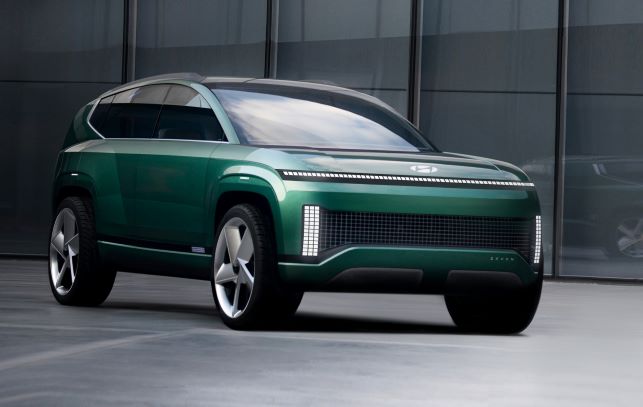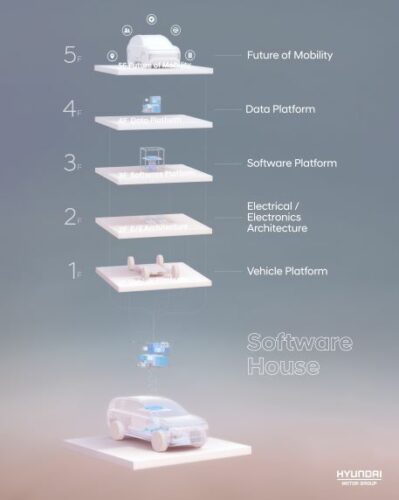
Hyundai will offer over-the-air (OTA) software updates for all models by 2025 to provide enhanced performance and functionality across its global markets.
About 20 million vehicles are expected to be registered to the Hyundai Motor Group’s Connected Car Services (CCS) worldwide by 2025, with all newly launched vehicles of Hyundai Motor Group from 2023 equipped to receive OTA updates, the transformation applying not just to electric models but also internal combustion engine (ICE) vehicles.
By 2030, the group plans to invest US$18 trillion in resources, including the establishment of a new Global Software Centre and research and development headquarters to bolster its software capabilities and accelerate Software Defined Vehicle (SDV) development.

Its Connected Car Operating System (CCOS) will offer customers personalised services and process data at blazing speeds, the data-based platform partnerships with industry sectors such as logistics, accommodation, leisure, and entertainment creating an open ecosystem and delivering a paradigm shift in mobility.
Constantly upgradeable software will provide diverse, stable revenue streams while offering fresh functionality and features to keep customers’ vehicles up to date.
Connected car data will network with future group mobility solutions, including purpose built vehicles (PBVs), advanced air mobility (AAM), robotaxis and robots.
Platform standardisation will cut costs and development time to enhance profitability.
Combining hardware and software technologies will significantly strengthen the group’s capabilities, the company adds.
“By transforming all vehicles to Software Defined Vehicles by 2025, Hyundai Motor Group will completely redefine the concept of the automobile and take the lead in ushering in a never-before-experienced era of mobility,” says HMG R&D division head Chung Kook Park.
“Creating visionary vehicles empowered with the ability to evolve through software will enable customers to keep their vehicles up to date with the latest features and technology long after they have left the factory.”
Customers will be able to remotely upgrade the performance and functionality of their vehicles anywhere at any time, without any need to take them to a service centre, says Hyundai.
It explains that as the vehicle can constantly be updated its residual value will also be enhanced.
The group will also offer feature on demand (FoD) services next year, giving customers the ability to select and purchase functions and features that meet their needs and tastes, and the freedom to create vehicles that best match their lifestyles.
The vast amount of data generated by the 20 million subscribed vehicles to the group’s CCS will provide the basis for the further development of personalised services.
The group plans to continuously offer customised services that can enhance individual customer requirements and handle vehicle big data exceptionally quickly and ultra-reliably.
It will also introduce vehicles in 2025 based on its two new EV platforms, eM, and eS, created under the group’s integrated modular architecture (IMA) system.
The eM platform is being developed specifically for EVs across all segments and will provide a 50% improvement in driving range on a single charge compared to current EVs. It is also being developed to support Level 3 or higher autonomous driving technology and OTA software update features.
The group’s eS platform will be developed as an EV skateboard exclusively for purpose-built vehicles (PBVs), with a fully flexible structure to meet B2B demands, and provide tailor-made solutions for companies operating in the delivery, logistics, and car-hailing sectors.
By standardising the batteries and electric motors, for example, which now vary across each EV model, the group will flexibly apply common components to each vehicle efficiently expanding its line-up.
The group is also similarly integrating the vehicle controller, reducing the overall number of controllers.
The integrated controller will enable the efficient development of diverse vehicle segments and strategic models optimised for each region and ease the process of adding new features and improving performance. The cycle of software updates will be shortened, whereas the frequency will increase. The technology also enables the group to respond flexibly and swiftly to meet rapidly changing market and customer needs.
The group foresees a future where the mobility industry paradigm is entirely transformed, enabling people to enjoy convenient, seamless travel, even if they don’t own a car.
Its mid-to-long-term strategy will accommodate a new dimension of mobility service and software will be the core technology that delivers this by seamlessly connecting new mobility devices and services.
“By ‘movement,’ we mean more than just moving between locations. We’re talking about the entire end-to-end journey, from leaving your house and meeting friends, to things like charging, shopping, eating, and finally returning home,” says group Transportation as a Service (TaaS) head Chang Song,
“Software-defined mobility will provide a holistic user experience based on vast mobility data and AI technology that understands user intentions and context. This way, all these journeys can be seamlessly connected.”








